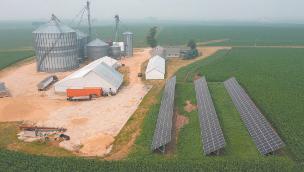Lanark restaurant owners enjoy putting their own slant on things
Cars fly off the shelf and hit the ground running in Milledgeville


Lanark restaurant owners enjoy putting their own slant on things
Cars fly off the shelf and hit the ground running in Milledgeville

August 17-27






September 8 – 10 & 13-17










Heartache Tonight An Eagles Tribute Band

September 23

Brit Beat A Beatles Tribute Band

November 4
Hair Band Night

October 7

Elvis Through the Years

November 18
The Piano Men

October 21
December 1-3 & 6-10


TICKETS TO ALL SHOWS & CONCERTS ARE NOW AVAILABLE



Have
Articles and advertisements are the property of Sauk Valley Media. No portion of Carroll County Living may be reproduced without the written consent of the publisher. Ad content is not the responsibility of Sauk Valley Media. The information in this magazine is believed to be accurate; however, Sauk Valley Media cannot and does not guarantee its accuracy. Sauk Valley Media cannot and will not be held liable for the quality or performance of goods and services provided by advertisers listed in any portion of this magazine.
More than 300 years ago, a French expedition set out to explore a renowned river, and they discovered monstrous fish, swans without wings, a monster with the head of a tiger and the nose of a wildcat — and beautiful land that would one day become Carroll County.

What started as a hobby picked up speed and turned into a business in Milledgeville, where the guys running the shop can hook you up with some fast and rugid rides that’ll leave others in the dust — and if you crash ’em, they can Bash ’em until they’re good as new. 14
Tucked between a waterway and a highway is a place where people can get back to nature and learn more about one of the most famous rivers in the world
Where do you go to find food that’s not afraid to be fun, someplace that folks of all ages can get together and have a good time, live music, and a PB&J pizza? At a Lanark restaurant that’s got a lot going on under one roof.

a small town where the maximum speed limit is 45 miles per hour, it’s not hard to find cars that’ll go three times that fast.
Don’t look for them drag racing on Route 40 through Milledgeville though; they’re parked inside a shop just off the highway

instead, waiting to fly off the shelf. And don’t expect to be in the driver’s seat of one either — you wouldn’t fit. You’ll have to keep your feet planted on the ground and let your fingers to do the talking instead, the car where to go and how fast to get there.
Curt Dusing and Kyle Knutti feed the need for speed at their store, EVS Hobbies USA, which specializes in remote control vehicles and parts.
 By Cody Cutter | Sauk Valley Media
By Cody Cutter | Sauk Valley Media
It’s located in the back of Carroll Industrial Molds, a factory that specializes in aluminium molds for the plastics industry.
The shop opened in October 2022, and it brings Dusing’s passion for remote control cars and trucks (“RCs” in hobby speak) together with
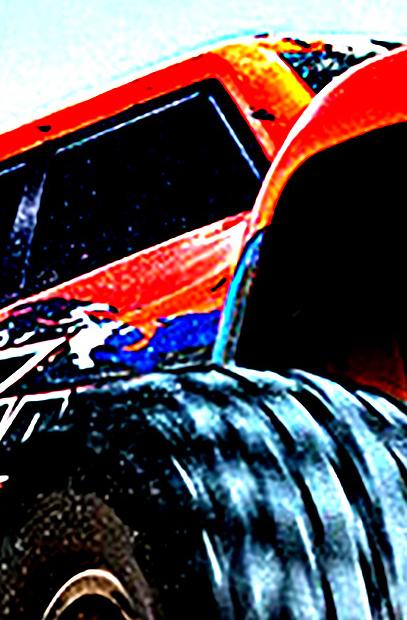

Knutti’s expertise in finances, bookwork and logistics. Vehicles fill display cases and on shelves throughout the shop — and we’re not talking about those peppy little plastic puddle-jumpers you find in the toy aisle at a big box store. These mighty little motors are geared more toward RC enthusiasts, with vehicles ranging from $90 all the way up to $1,200, and some of them can reach speeds of more than 100 mph (the current world speed record is around 220 mph, Dusing said). They’re the kinds of remote rides you’d find at hobby shops in a bigger city.
EVS cont’d to page 6
EVS cont’d from page 5
“A lot of people will walk in and their eyes kind of light up and go, ‘Whoa. What is this doing in this building?’” Dusing said. “A lot of people are surprised about what we have, the volume of what we have, and what’s available.”
Among the store’s stock are readyto-run models that just need a battery, open wheel rollers, and crawlers that navigate uneven terrain. The line of power equipment in stock includes batteries and battery chargers, wires, servos and radio accessories. An array


of parts and tools also are available.
EVS can also help customers get parts for models they don’t carry, such as boats and airplanes. If someone has one of those, Dusing and Knutti can check with their wholesalers to arrange for something to be sent to the store or shipped to the customer.

“Just because we don’t have airplanes here, it doesn’t mean we can’t get the parts for them,” Dusing said. “I deal with the companies that make them. The wholesalers that I buy from, they are either the manufacturers or suppliers of all of it. You can come in and say you have an airplane, we’ll look up some part numbers and I can probably have it ordered in 3 to 5 minutes.”
As for other parts, the store doesn’t have far to go to get them. Along with OEM parts, EVS also carries Just Bash It products — and all those parts come in handy for RC drivers. Like the EVS website says: “ Let’s face it...if we aren’t breaking it, then we probably aren’t driving it hard enough.”
EVS cont’d to page 7
Dusing, who owns and is president of EVS as well as Carroll Industrial Molds, enjoyed playing with RCs as a kid. As he grew up, RCs took a back seat as other things occupied his time, but a few years ago he started thinking about the cars again when he and an employee at the factory started chatting about their shared interest in RCs.
Later, his passion for the RCs got a jump start when he learned that Knutti, who is both vice president of EVS and Carroll Industrial Molds, bought his son an RC for Christmas in 2017. Dusing heard about it, and invited father and son to the factory one day so they could use its open space to run the car. That 10 minutes of fast-paced fun inspired Dusing to buy one of his own.











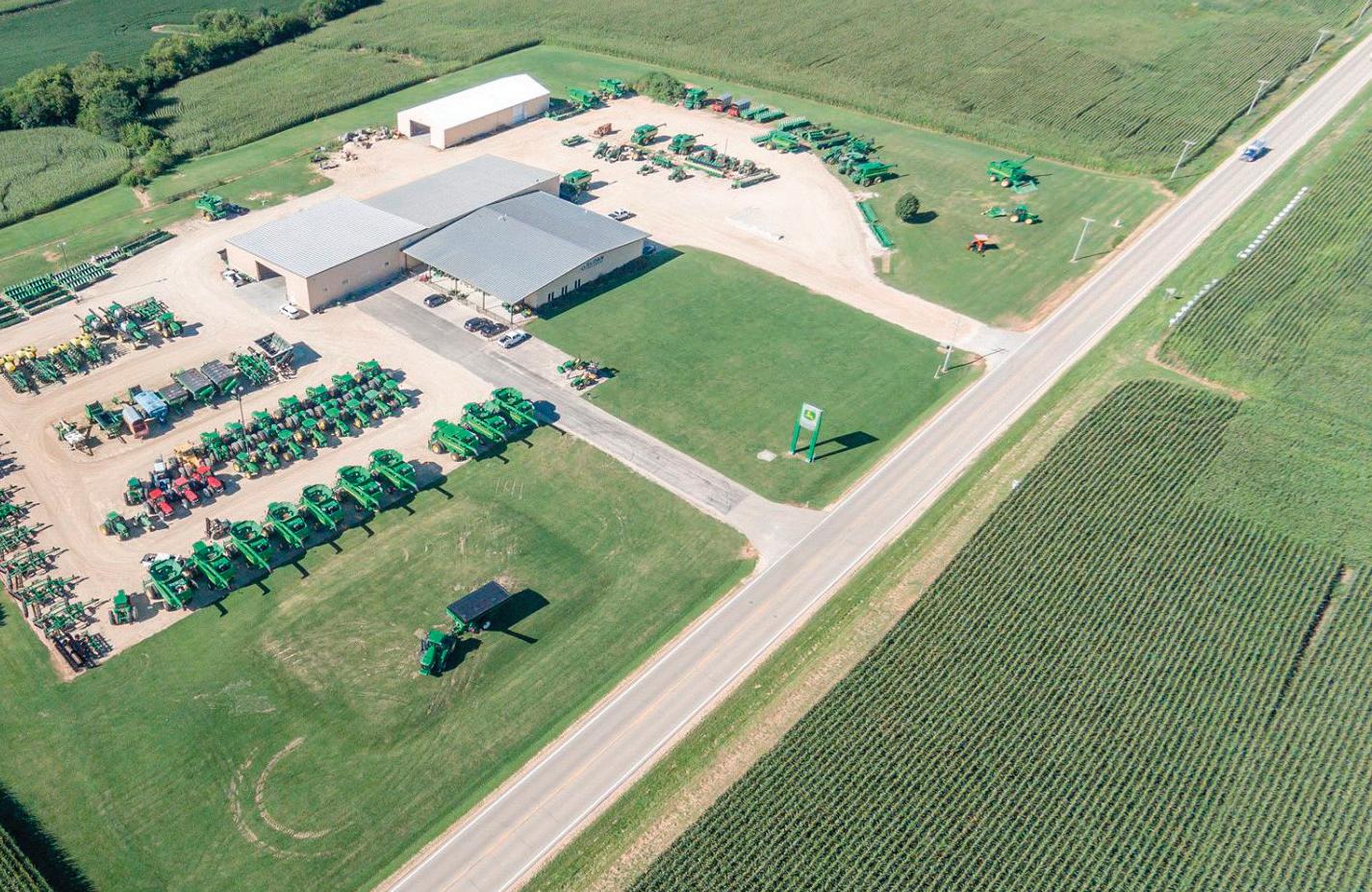

When Dusing wound up crashing his cars, he hatched an idea to make replacement parts of his own, and that led to starting a business in 2018, Just Bash It, which makes chassis, wheel adapters, shock towers and other support parts at his factory when the production schedule allowed.





A tower of power
... EVS carriers RC vehicles in a range of different styles — cars, trucks, SUVs, racers — and scales, so you can fit just the right fit.


EVS cont’d from page 7
EVS has developed both an international and local following, and Dusing and Knutti have gotten to know customers who stop by, sharing stories and their passion for the hobby.
“We get people from Clinton that come here because it’s quicker for them to come here instead of the Quad Cities,” Dusing said. “I have customers who will drive out of the suburbs of Chicago because we specialize in more RC cars and trucks — more surface ones than airplanes, boats, trains and the other stuff. We really focus on the RC cars, trucks, crawlers; and we have a lot more specific product lines in house that some of the other stores don’t necessarily have.”
Some customers have been loyal enough to earn their trust with the shop’s special tools, pitching in on a repair when time is tight.
“Sometimes people come here and fix it here, and talk to Curt and talk about what’s coming up, what’s new, what’s different, and there’s a social aspect to it,” Knutti said. “Somebody with common interests can talk about a lot of things.”
Running a retail business is different than operating a factory, and Dusing and Knutti are enjoying the new experiences they’re learning along the way. For example, bulk shipments to other countries can vary based on international law, and for some countries the rules can be tough to navigate, but they work together well to get it done.
EVS cont’d to page 10





































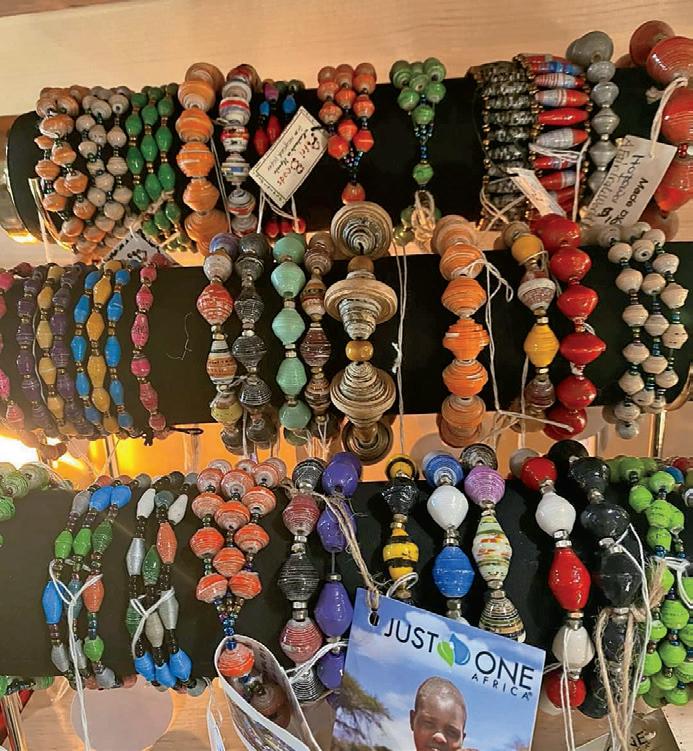
“Learning about point-of-sale, retail, how business works, how the different tax rules work, shipping, logistics — learning that stuff has been a challenge, but it’s nice to fulfill yourself with a lot of new knowledge,” Knutti said. “I enjoy watching new things come about.”
Dusing said that RC builds and racing picked up speed during the recent coronavirus pandemic, as people found themselves at home more.



“People had to stay home,” Dusing said. “You wouldn’t think that a lot of people were spending money, but they were at home and couldn’t do anything.”

Dusing’s involvement with Just Bash It has even taken him to the United Kingdom, in the spring of 2020, when the business helped sponsor an RC event there. As the pandemic turned people’s plans upside down, Dusing found himself almost stuck there as flights were being cancelled as part of the halt on worldwide travel. He was able to make it home, but if he hadn’t, he said, everything likely would have changed, and maybe the store wouldn’t have happened.

There’s a lot of moving parts in these mighty little machines, like the one Dusing is showing at right, and EVS sells replacements for them — and if they don’t have it, they’ll get it from one of their wholesalers.























































But the store did happen, and it’s become known by RC enthusiasts around the world — and they’ve gotten to know a little piece of Milledgeville that way. Dusing and Knutti like spreading the word about RCs, not only to longtime enthusiasts, but people new to the hobby, too.
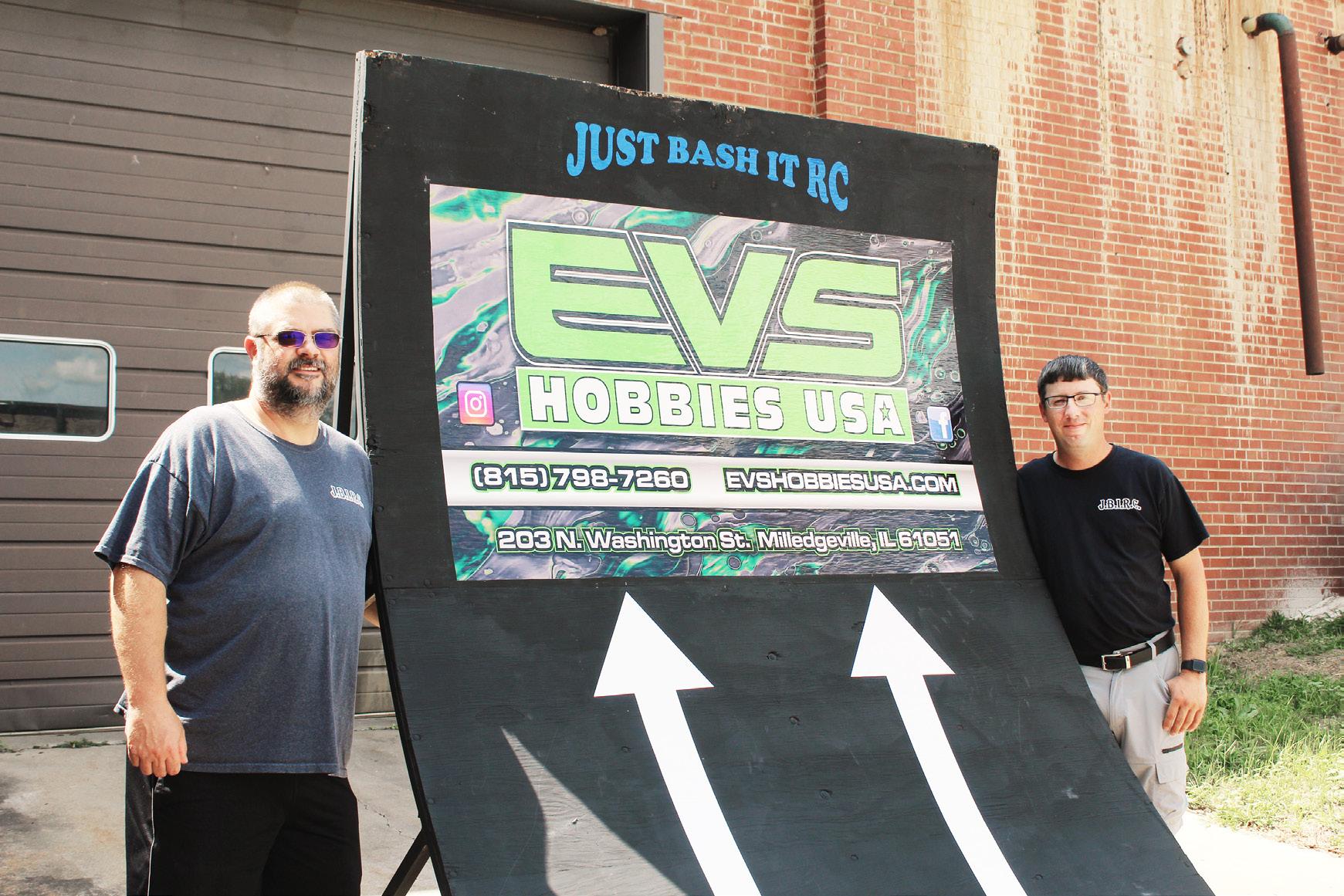





“What’s awesome about RC, locally, is that there’s more people involved with it than one may think,” Dusing said. “I’ve had guys that come in here and think, ‘Wow, now that there’s a store close, I can get out the car that’s been sitting for five years and you have parts for it.’ You start building groups. The friendships and the relationships that we’ve built with it is absolutely amazing.” n Cody Cutter can be reached at 815-6322532 or ccutter@ shawmedia. com.




















JCWIFI has lower latency*…no wonder even financial traders prefer wireless




*Latency is the delay that occurs when your computer is talking to other computers/servers; for example, you may experience low or high latency (delay) during an online auction or engaging sports game – not good!








WHY WIRELESS?







JCWIFI offers low, consistent, no-hidden fee pricing compared to fiber and cable providers’ often inconsistent, add-on pricing












JCWIFI is local with friendly, local tech and customer support — not outsourced like a national company

































JCWIFI cannot be physically cut so is less fragile than fiber optics where cut lines can result in long outages



























SPEED


he river that is Carroll County’s western border is called the “Mighty Mississippi” for a reason: 2,340 miles of water flowing from Minnesota to the Gulf of Mexico that not only serves as a natural highway for people and wildlife, but as a major artery in the lifeblood of the shipping industry, carrying nearly 200 million tons of freight and commodities each year.
The second-longest river in North America is also one of the richest sources of biodiversity in the world, and for an 80-mile stretch, some natural peculiarities exist that are unique along the river’s long and winding path, providing a living lesson in the fascinating role the river plays in our ecosystem.

It’s a perfect spot for a classroom that offers a course in current affairs. That’s where The Ingersoll Wetlands Learning Center comes in. Situated between the Mississippi River and state Route 84 between Thomson and Savanna, the facility not only celebrates one of the world’s most famous rivers and its tributaries, it’s the learning center and office for the Upper Mississippi River National Wildlife and Fish Refuge, overflowing with hands-on exhibits and educational
INGERSOLL cont’d to page 16
 materials.
The Ingersoll Wetlands Learning Center
materials.
The Ingersoll Wetlands Learning Center
Ed Britton, Savanna district manager of the Upper Mississippi River National Wildlife and Fish Refuge, holds up a great horned owl that’s used as an educational tool for visitors and nature programs at the Ingersoll Wetlands Learning Center in Thomson. In a 46-year career in nature preservation, Britton has been with the Ingersoll center for 28 of them. “Every place you go is a different opportunity,” Britton said. “Most places I’d been, I’d been there one year or two years, or five years. I’ve been here 28 years, because I love the river. Here, the river is so dynamic. There’s so much that goes on. That’s what’s kept me here.”

Of course, every classroom needs a teacher, and that’s where Ed Britton and a team of dedicated stewards of nature come in, helping educate nature lovers and novices alike in the river’s starring role in the environment and the importance of conservation.
The learning center is operated by the Upper Mississippi River National Wildlife and Fish Refuge, and it’s where Britton and the Stewards of the Upper Mississippi River Refuge share their expertise with visitors.
The facility features a central exhibit area with interactive displays, preserved animals, pamphlets, a bookstore and gift shop. Outside, the surrounding area features plenty of opportunities for visitors to experience nature firsthand, among 35 acres of native prairie, sand prairie, and the Sloane Marsh along the riverfront. Hikers and bikers are also welcome to traverse the Grand Illinois Trail.

INGERSOLL cont’d from page 16
One of the nice things about the center is that you don’t have to be a river scientist to appreciate it.



Britton, who’s been the refuge’s Savanna district manager for 28 years, has answered countless questions from visitors, from the simple to the scientific. Some people have immersed themselves in the topic of the environment, while others start out by just dipping their toes in the water, like the people who learn the difference between a coyote and a wolf, thanks to one of the center’s exhibits.

“People will look up and see the wolf, and many don’t realize that we have wolves that come through here,” Britton said. “What we’re also trying to show next to it is a fox, a bobcat and a coyote, all different kinds of mammals that come through here. Some people do get them confused, they’ll see a coyote and think it’s a wolf.”
INGERSOLL cont’d to page 18



No matter where you look at the Ingersoll Center — up, down and all around — you’ll see opportunities to learn more about wildlife: There are informational stickers stuck on the floor, fish mounted on the wall, and other subjects of the animal kingdom birds and beaver, waterfowl, even a few coyotes. And if you’re a bird watcher, you can pick up a checklist and head outside to see how many birds you can spot.

There’s no shortage of topics to teach — birds and butterflies, fish and flora. Each species has their own way of utilizing the Mississippi River’s resources, and it’s the center’s mission to understand those ways, and help others understand them, too.


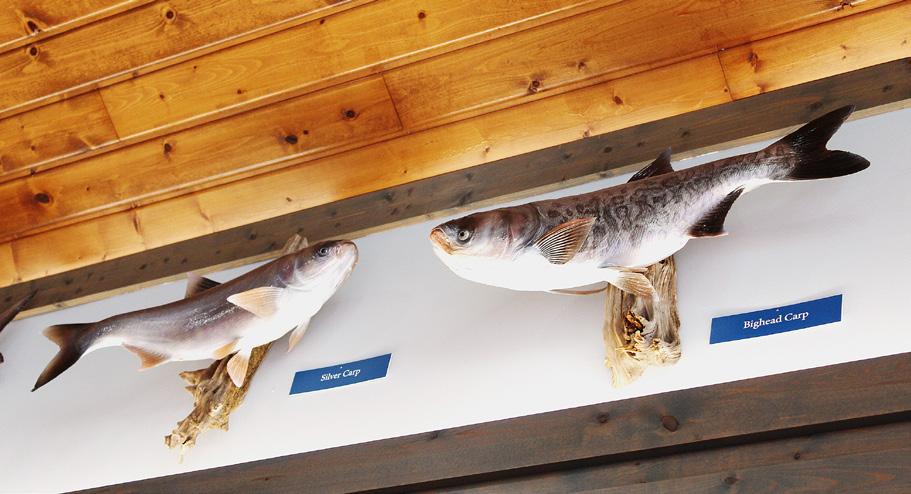
Not all of the center’s visitors walk through its doors. Sometimes they scamper through the refuge, giving guests a chance to catch a glimpse of wildlife, nature enthusiasts a chance to see something in person they’ve only seen in books, and photographers a chance to capture a photo. Those wildlife visits are also teachable moments for the center’s staff.




Among the people who like to stop by the center are bird watchers. Bird-watching pamphlets are available at the center, and guests can take one with them and check off the birds they see during their visit. Other fans of nature’s feathered fauna bring their own list.




“When a rare bird comes through, it attracts a lot of attention — a lot of good attention, Britton said. “We get a lot of folks who come in who have a life bird list (a list of birders’ sightings during their life). There may be hundreds of birds, or a hundred, but everywhere they go they always look for a new species.”

The center and its stewards also hosts monthly bird walks and golf cart tours of sites along the river. Among those sites are some that are unique to Carroll County: the remnant sand prairies at its corners: 4,000 acres at the former Savanna Army Depot and 260 acres at the Thomson-Fulton Sand Prairie.

The stewards are “a strong support group for us,” Britton said, numbering about 75 in all with as many as 30 who meet monthly to organize activities and educational programs. Junior stewards, aged 10 to 15, also meet once a month and do a lot of their learning out in the field — a much better setting than in a classroom, Britton said.
“We get them out there, getting in the mud, getting in the prairie or the grass,” he said. “We don’t sit in a classroom, we actually show them what’s going on, and with being such young kids, one or both of their parents come, which is great for us. Not only do we get the kids involved, but we get the parents involved, too, and they take an interest in it.”
In fact, a pair of young people served as an inspiration for the center.


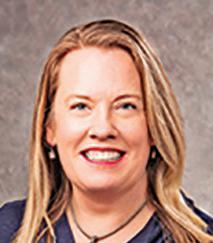

















The Ingersoll Wetlands Learning Center is named after a pair of Savanna brothers who spent time along the river growing up — even when it wasn’t always easy.


Gary and David Ingersoll were stricken with muscular dystrophy, but they didn’t let that stop them from loving nature. Growing up with an appreciation for the great outdoors — their parents, Bill and Beatrice, owned the Lazy River Marina near Mississippi Palisades State Park — the two attended college and shared a mutual interest in conservation.

The Ingersoll Wetlands Learning Center is named after David (top) and Gary Ingersoll, Savanna brothers who didn’t let muscular dystrophy stop them from loving nature. The brothers passed away before age 22 of the disease. When Ingersoll opened its current facility in 2000, it was dedicated to the Gary and David.
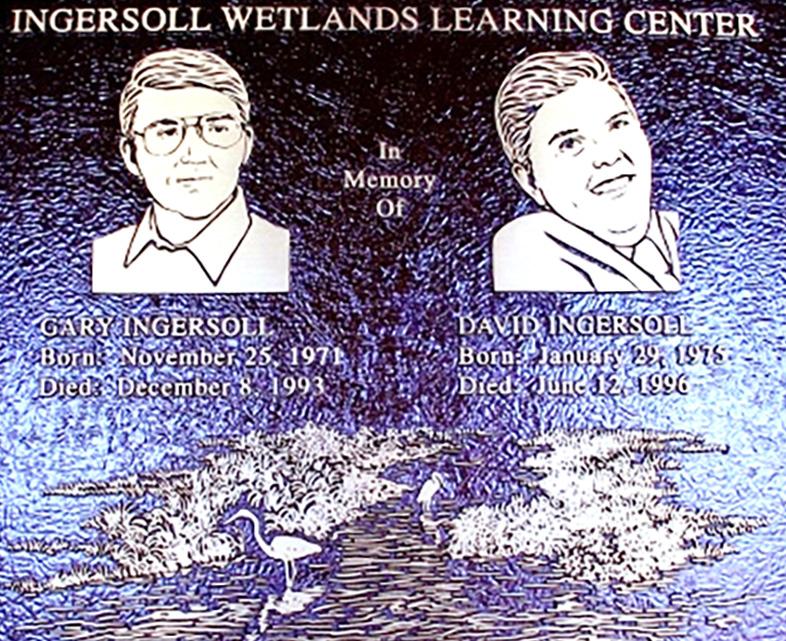
SPORTS WAGERING




































The brothers passed away before age 22 of the disease, Gary in 1993 and David in 1996, and at the time, the refuge’s office was in the basement of Savanna’s post office. But when the current facility opened in 2000, it was dedicated to the two young nature lovers whose passion for the outdoors was known by many in the area — and, of course, the center is ADA-compliant, so that everyone can enjoy what it has to offer.

“When the building was designed, we wanted to have a portion dedicated to the public and education,” Britton said. “A lot of folks put a lot of input into this. We have a variety of specimens, and we like to showcase the variety of what we have.”
There’s more to the Mississippi River than just boats and human adventure, and the Ingersoll Wetlands Visitor Center gives people a wealth of information about how nature works.
“People can learn just how diverse the habitat us,” Britton said. “Between the river and the bluffs, and the prairies, I think a lot of people are impressed when they get to the river with all of the scenic views and the fishing and hiking opportunities of which there are so many.” n
Cody Cutter can be reached at 815-632-2532 or ccutter@shawmedia.com.

www.fsbshannon-polo.com



The Ingersoll Wetlands Learning Center of the Upper Mississippi River National Wildlife and Fish Refuge, 7071 Riverview Road in Thompson, is open from 8 a.m. to 4 p.m. Monday through Friday, and Saturdays from June to August from 9 a.m. to 4 p.m.
Go to stewardsumrr.org to learn more about the center's activities and the Stewards of the Upper Mississippi River Refuge support group, or find it on Facebook and YouTube.
Go to fws.gov/refuge/upper mississippi river to learn more about the Upper Mississippi River National Wildlife and Fish Refuge, which spans from Wabasha, Minnesota, to Princeton, Iowa.
ong before roads and railroad tracks criss-crossed Carroll County and towns dotted its landscape, it was a place where the buffalo roamed and the deer played, where tribes would trek through its grassy fields, hunting and fishing, existing on what nature would provide.
During the mid-1600s, the Illiniwek had the area that would later become Carroll County to themselves; its scenery still as nature intended, untouched by progress. The birth of a nation was more than a century away — but it wouldn’t be long before the white man’s wanderlust would bring him west, across land uncharted, soil untilled, country undiscovered.
But before states united and America expanded, a pair of French explorers made their way down the Mississippi River, and this year marks the 350th anniversary — the sesquarcentennial — of those first steps to discover a new world.
 MISSISSIPPI cont’d to page 24
PHOTO: CODY CUTTER |
MISSISSIPPI cont’d to page 24
PHOTO: CODY CUTTER |

In 1673, new faces were seen in Illiniwek territory, heading down the river — lighter skinned, clothed differently and speaking a language the natives didn’t understand: Frenchmen Jacques Marquette and Louis Jolliet, who had embarked on an expedition along the Mississippi River. They were the first Europeans to descend the Mississippi River from the Great Lakes region to its confluence with the Arkansas River, and they were searching for a passage to the Pacific Ocean.






Setting out on their journey from French Canada, Marquette and Jolliet, along with a small crew, reached the Mississippi River from what is now Prairie du Chein, Wisconsin, and sailed to a point a couple hundred miles north of the Mississippi Delta.
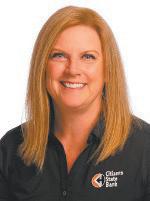




Along the way, Marquette and Jolliet became the first modern explorers to set their eyes on the area that would become Carroll County.

The first humans eyes gazed upon Carroll County’s land somehwere between 10,000 and 30,000 years ago, when descendants of the first Native Americans came across the ice-covered land bridge from Russia to Alaska. The earliest human migration path from hundreds of centuries ago originated in Africa and split off into both Asia and Europe. Leif Erickson became the first European to set sail to America in the 11th century, but from that point until 1673, no one from Europe had seen the Driftless Area or its surroundings. That changed when Marquette and Jolliet arrived.

MISSISSIPPI cont’d from page 24


The French explored the northernmost regions of North America in the mid1550s, and it became New France. A century later, the French had become a mainstay in the “new world” and had decided to explore the area further west. They would begin to map out the area, based on observations and friendly exchanges with Native Americans. The natives knew that there were waterways leading to much larger bodies of water such as gulfs and oceans.

When the French learned that a path could be taken from its most prominent settlement — then Quebec City — to the Pacific Ocean and the Gulf of California, they planned to explore it. New France governor Louis de Buade assembled explorers to head west and bring back information. Jolliet, a noted local explorer, was chosen to lead the expedition; and de Buade had Marquette, fluent in several Native American languages,
accompany him. The two met at St. Ignace (near the junction of Lake Michigan and Lake Huron), and set sail down Lake Michigan on May 17, 1673, with a small crew.
Marquette and Jolliet were men of faith: Marquette a Jesuit priest, and Jolliet having once studied the priesthood before becoming an explorer. While they made their way across unknown territory, they also sought to spread the word of Christianity.


Centuries later, Marquette’s mission of faith and exploration would influence the names of several schools along the path he travelled (including Marquette High School in Bellevue, Iowa), and even a small town in north central Illinois. Jolliet, too, would be a namesake of a much larger city — albeit with a slight spelling tweak — out the outskirts of the Chicago area.
The expedition crossed present-day Wisconsin through rivers and portages from Green Bay to Prairie du Chien and reached the Mississippi River on June 17. Both Marquette and Jolliet kept diaries and maps of their travels. Though Jol liet’s account has been lost to time, Marquette’s survived and it went on to serve as a firsthand account used by historians for dates and landscape descriptions. Marquette’s topographical sketches revealed the region that makes up today’s Driftless Area of high hills and sloped terrain; they also noted lead deposits along the way, including those in present-day Galena, which would later be the catalyst for its reputation as a booming mine town and one of the most impor tant cities in early Illinois history.
MISSISSIPPI cont’d to page 26





Roughly 65 nautical miles separates the mouth of the Wisconsin River at Prairie du Chien to the mouth of the Maquoketa River near the former Savanna Army Depot, where the expedition reached the current northern border of Carroll County. At various times, the expedition took to land to hunt, cook and rest, but apparently any stops set upon land within county borders proved unworthy of Marquette to detail in his diary — though that didn’t mean Carroll County’s natural scenery wasn’t mentioned.


The expedition’s approximate time within the western border of Carroll County is around June 19-21. Marquette’s diary details the following (with edited translations and spellings where noted):























“Here we are, then, on this so renowned river, all of whose peculiar features I have endeavoured to note carefully. The Mississippi River takes its rise in various lakes in the country of the northern nations. It is narrow at the place where Miskous [Wisconsin River] empties; its current, which flows southward, is slow and gentle. To the right is a large chain of very high mountains [the Driftless Area], and to the left are beautiful lands; in various places, the stream is divided by islands.”






Marquette made note of when the bluffs began to drop and go off into the distance from a river view near Thomson …
“On sounding, we found ten brasses of water. Its width is very unequal; sometimes it is three-quarters of a league, and sometimes it narrows to three arpents (an old French unit of land area equivalent to about an acre). We gently followed its course, which ran toward the south and southeast, as far as the 42nd degree of latitude. Here we plainly saw that its aspect was completely changed. There are hardly any woods or mountains; the islands are more beautiful, and are covered with finer trees. We saw only deer and cattle, bustards, and swans without wings, because they drop their plumage in this country.”


According to Marquette’s diary, the outdoor adventures that Carroll County is known for today were interesting even 350 years ago. Want to know the county’s first
big fishing story? Read on ...


“From time to time, we came upon monstrous fish, one of which struck our canoe with such violence that I thought that it was a great tree, about to break the canoe to pieces. On another occasion, we saw on the water a monster with the head of a tiger, a sharp nose like that of a wildcat, with whiskers and straight, bract ears; the head was gray and the neck quite black; but we saw no more creatures of this sort.
“When we cast our nets into the water we caught sturgeon, and a very extraordinary kind of fish. It resembles the trout, with this difference: that its mouth is larger. Near its nose — which is smaller, as are also the eyes — is a large bone shaped like a woman’s busk (a strip of rigid material inserted into a corset to keep it stiff), three fingers wide and a cubit long [1.5 feet], at the end of which is a disk as wide as one’s hand. This frequently causes it to fall backward when it leaps out of the water.”
Other than the necessities of survival, the expedition did not encounter any natives during their time in the area 42.19 to 41.92 latitude — the northern and southern borders of Carroll County. Meals changed more to poultry as they approached the bend in the river near the Quad Cities, as much of the deer and cattle gave way to turkeys.
Eventually, the expedition met with their first Illiniwek natives near present-day Keokuk, Iowa, at the mouth of the Des Moines River on June 25. The natives called their area Peouarea, which would influence the name of one of central Illinois’ most important cities, Peoria.

The Golphe du Mexique (Gulf of Mexico). Note: The expedition did not reach the gulf, having turned around at the Arkansas River.

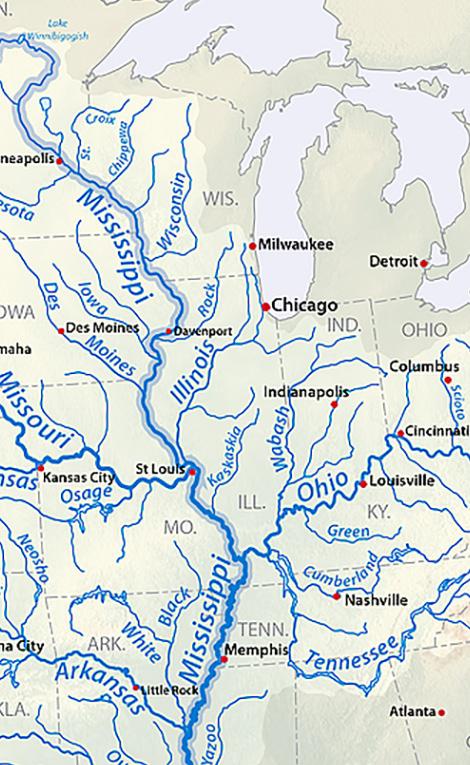



MISSISSIPPI cont’d from page 27
The expedition also met with natives at pres ent-day Kaskaskia, where Marquette established the Church of the Immaculate Conception, today one of the oldest Catholic churches in America.

Between Peouarea and Kaskaskia, the expe dition unknowingly missed its turn to get to the Pacific Ocean: the Missouri River. Marquette did explain the site of the mouth in his diary, though: “We de scend, following the current of the river called Pekitanoui, which discharges into the Mississippi, flowing from the northwest. I shall have something important to say about it, when I shall have related all that I observed along this riv er.” Marquette never did go into any further detail about it. The expedition reached its southernmost point at the mouth of the Arkansas River, about 100 miles south of Memphis. There, they encountered Spanish settlers and decided to go back, not wanting to risk engaging in conflict with them.
MISSISSIPPI cont’d to page 31






As they made their way back up the river, they learned from the Illiniwek of a shortcut back to Lake Michigan through the Illinois River, exiting near what would later be Chicago. Along the Illinois, they would sail by settlements that would later bear their names: the aforementioned Joliet, and the small village of Marquette in Bureau County.
Marquette and Jolliet never did make their way back to Carroll County. However, their detailed account of their sojourn through the area would attract others to the area, especially the lead mines of Galena. Marquette died of dysentery in 1675, and Jolliet was determined to be lost at sea in 1700 during a trip from Quebec to Anticosti Island in the Gulf of St. Lawrence.
The Mississippi River largely remains intact from 350 years ago, though some minor course corrections have taken place due to flooding, and the construction of Lock
and Dam No. 13 in the 1930s created a wide lake near Thomson. France would lose its area along the eastern coast after losing the French and Indian War to Great Britain in 1763, and lost the western coast to the Spanish at the same time. France regained the western coast from the Spanish in 1800, but the Louisiana Purchase in 1803 gave that area to the United States.
In 1804, the area Marquette had pointed out as an important river junction in his diary, but that he never made any further mention of, was finally explored by Meriwether Lewis and William Clark (the famous Lewis and Clark expedition), who followed the Missouri River until reaching the Pacific Ocean in 1805.

As for the Illiniwek natives, they lost their land in northwest Illinois to the Sauk and Fox tribes in the early 1700s. The Sauk and Fox were mainstays in the area until the Black Hawk War of 1832 drove them west of the Mississippi River. When that happened, Savanna was just a tiny, four-year-old settlement along the river, settled by those who made use of the iron mines up north. Carroll County’s growth continued from that point on, becoming an area of outdoor adventure as Marquette and Jolliet’s crew experienced first-hand. n
Cody Cutter can be reached at 815-632-2532 or ccutter@shawmedia.com.
An version of Jacques Marquette’s journal written during his and Louis Jolliet’s 1673 expedition on the Mississippi River has been translated, courtesy of Illinois Wesleyan University: Find it at titan.iwu. edu/~matthews/ intro.html.




ino Novakovic and Jill Luning have cooked up a way to get hungry folks coming back to their downtown Lanark restaurant. Offer good food and good service, and then give customers something to talk about — like the menu.

Do you want peanut butter, jelly and potato chips wrapped in a tortilla? How about some caramel sauce on your burger? Or maybe a pizza on top of a pizza? You’ll find them at The Crooked Roof, and while those menu mash-ups may sound a little off-kilter to some, the only thing crooked about their restaurant is its name (well, and the roof, too, but more about that later).
ROOF cont’d to page 34


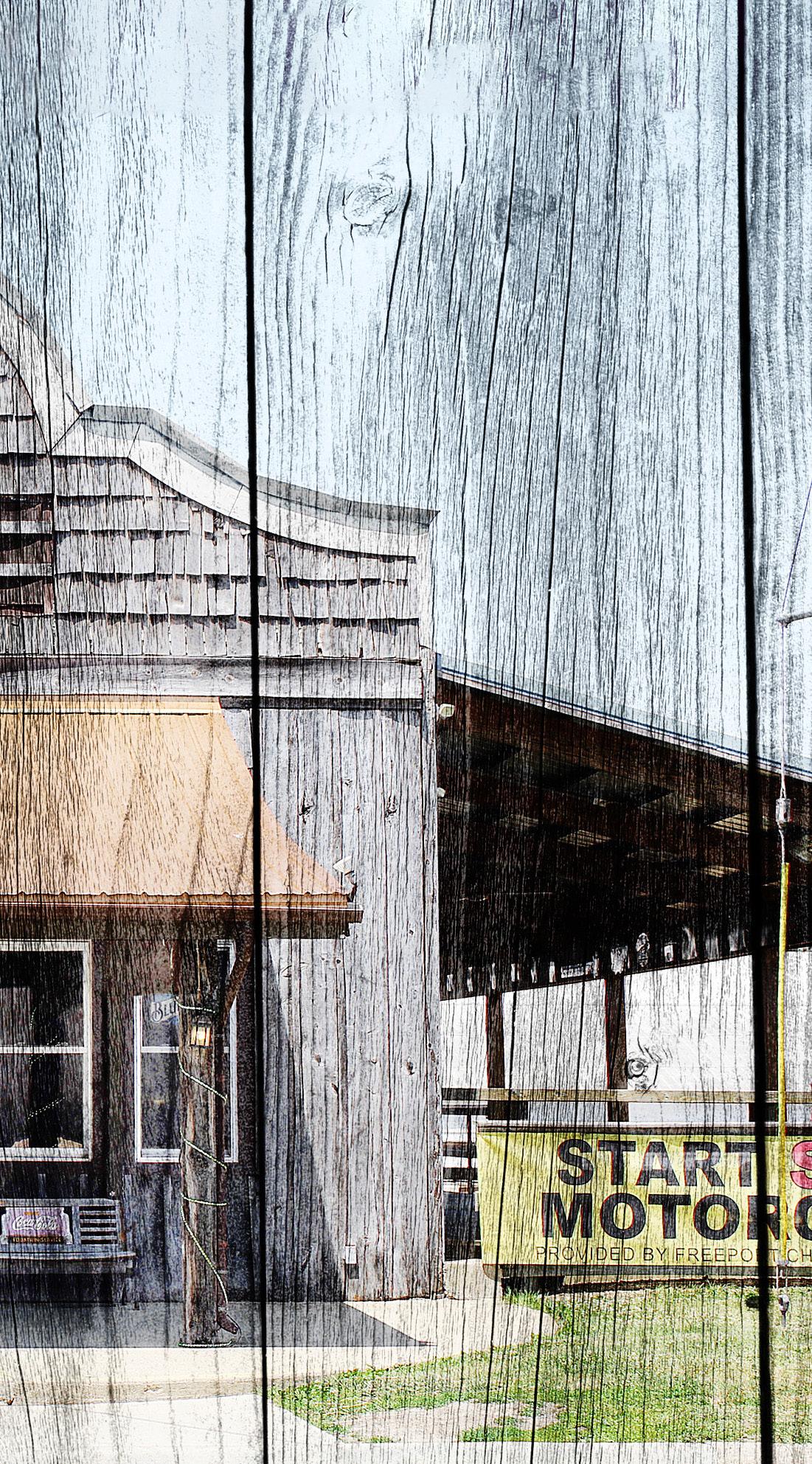
ROOF cont’d from page 33
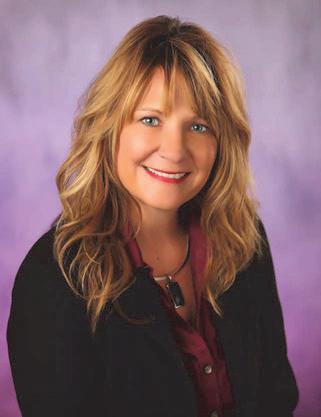
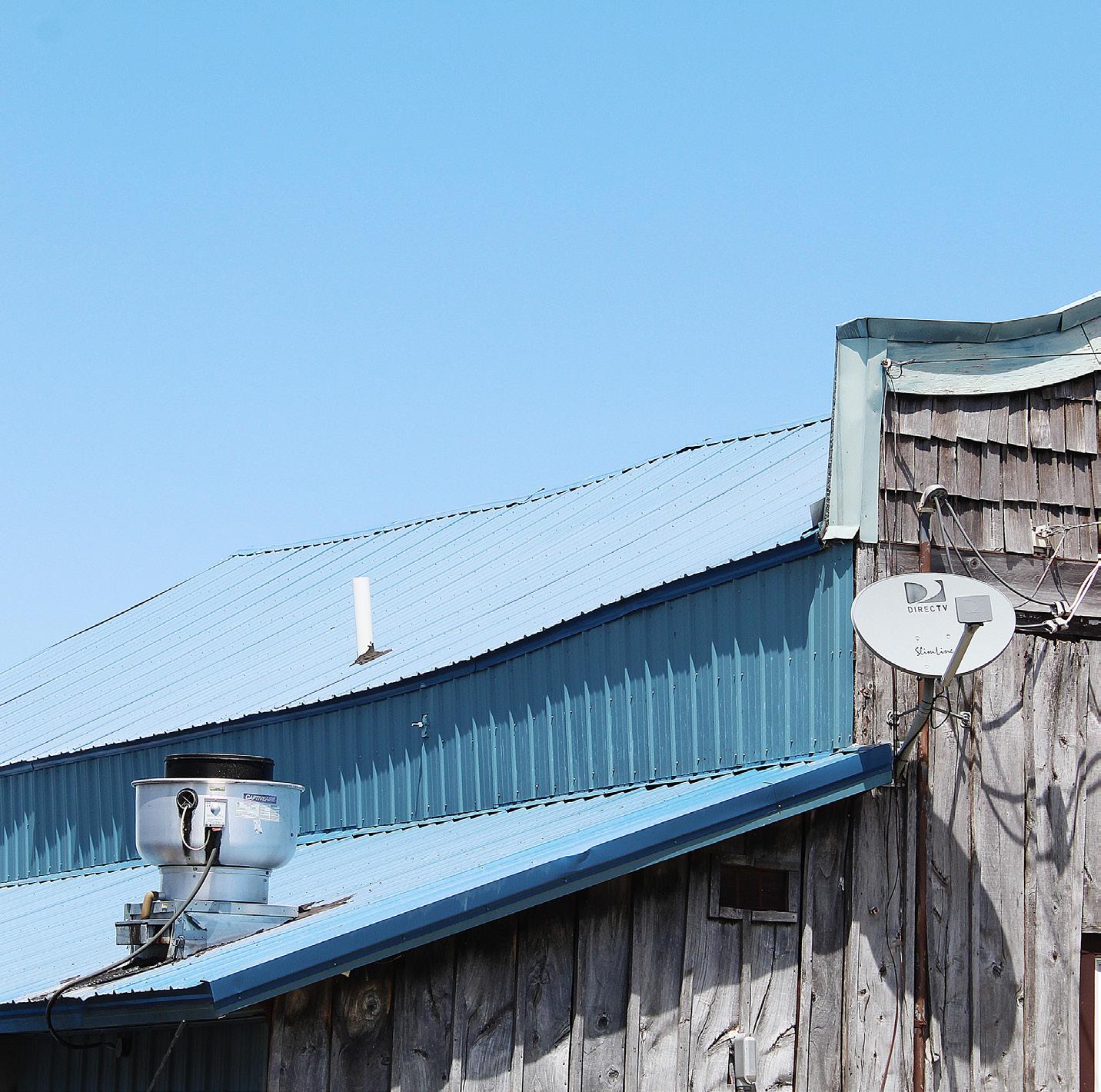




Novakovic and Luning have made variety a centerpiece on their tables, and the husband-and-wife team continue to get their culinary creations on as they approach their 10th year in business at the bar/restaurant. While offering traditional favorites, they’re not afraid to mix things on their menu.



Take their burgers for example — and there are a lot to take: You can get the basic beef on a bun (the Just A Burger), or you can try one of their many speciality burgers that are more than just a burger.

The Crooked Roof offers several, but one of the newest — and already top-selling — is the caramel cheddar bacon burger: a half-pound patty topped with cheddar cheese, bacon and covered in caramel sauce, all between two buns.
“It’s become a huge hit,” Novakovic said. There’s also the Wassssup Burger, with wasabi sauce and pepper Jack cheese; a burger with bacon, BBQ and pulled pork; and an interesting combination: a patty with Thousand Island dressing and onion rings called The Interesting Burger.
ROOF cont’d to page 35

Though “The Crooked Roof” may seem an unlikely name for a restaurant, it’s actually a perfect fit. The wonky roof inspired the name of the business.
CODY CUTTER/CCUTTER@SHAWMEDIA.COM
Belly up to the bar and have a belt ... Customers will find some championship gold at The Crook Roof. This replica of World Championship Wrestling’s World Heavyweight Championship (“The Big Gold Belt”) was signed by wrestling legend Hulk Hogan, whom Nino Novakovic has gotten to know over the years.

ROOF cont’d from page 34
















The food does a lot of the talking when it comes to helping spread the word about The Crooked Roof as a restaurant that stands out from the rest, and what it says is: Don’t be afraid to try something different, maybe even a little wacky — like a wrap that sounds more like a sandwich kids concoct in a school cafeteria.
The idea of taking peanut butter, jelly and potato chips and wrapping it in a tortilla — called the Wacky Wrap — is just one of the ideas the couple tries out in the Crooked Roof kitchen. Unlike other wraps on the menu, this one doesn’t have tomatoes or lettuce on it.

Being there, every minute, or every day. As your hometown electric cooperative, it’s not just our way of doing business, it’s our way of life. And as a member, that means value that goes far beyond the energy we provide, value you can’t really put a price on.


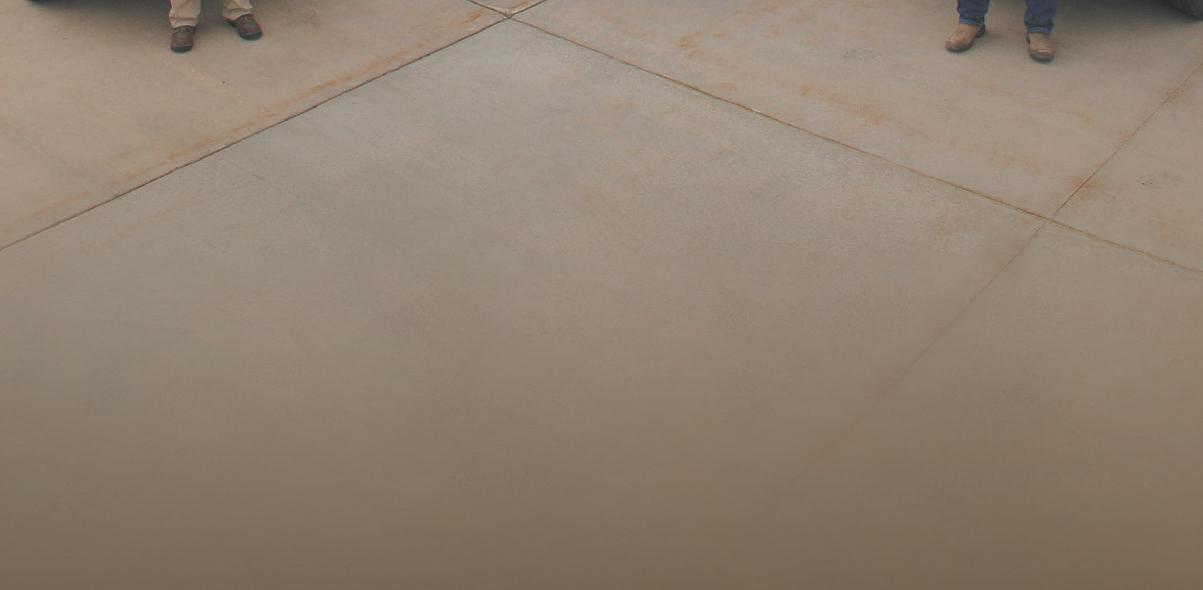


Nino Novakovic talks about the restaurant’s outdoor seating area and beer garden, which provide plenty of room to host The Crooked Roof’s motorcycle nights and live music events.



Wraps aren’t the only place you’ll find PB&J at The Crooked Roof. It’s also on one of their pizzas.

Following their quest for creativity, Luning and Novakovic offer a peanut butter and jelly pizza, along with other specialty pizzas. They come in a 12-inch small, 16-inch large, or a 10-incher with gluten-free crust. The pies are sliced up in New York fashion, with pieces big enough to fold up and eat. And if you want someone else to do the folding, calzones are available.
As for that pizza on top of a pizza? It’s actually a stuffed pizza: crust, pizza toppings, then another layer of crust topped off with — you guessed it — more toppings.
“We’ll make a pizza with whatever topping you want on it, and then we’ll take another layer of dough, put it on top, and have another pizza on top,” Novakovic said. “It’s thick, it’s huge, it’s really good. If you order a stuffed pizza, you might eat two slices and get full. It’s great for a family.”



The Crooked Roof, 109 E. Carroll St. in Lanark, is open from 11 a.m. to 9 p.m. Sunday, Tuesday and Wednesday; 11 a.m. to 10 p.m. Thursday and Friday; and 11 a.m. to 2 a.m. Saturday. Find it on Facebook, go to thecrookedroof.com or call 815-493-6838 to place a carryout order or for more information.

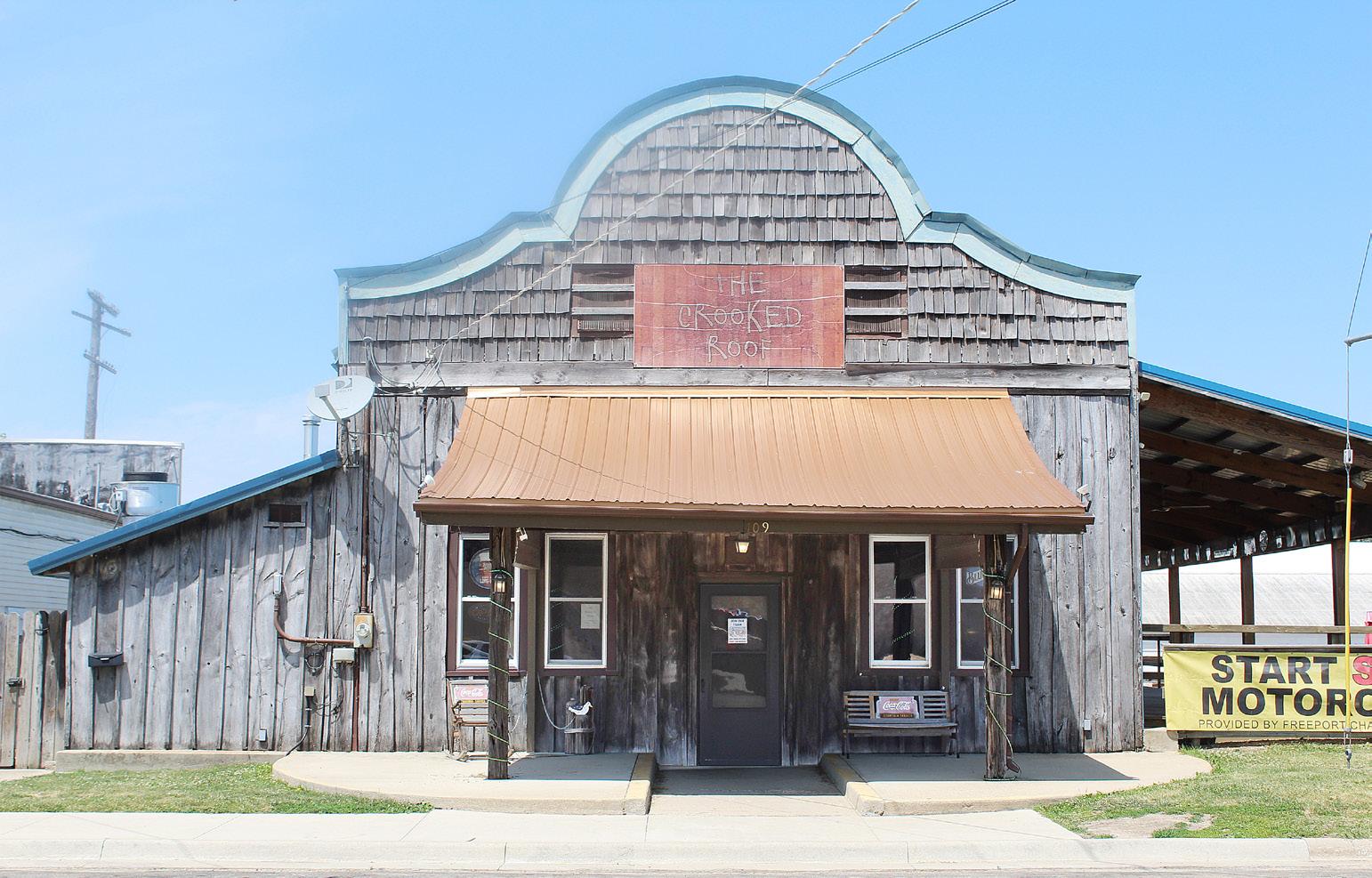

ROOF cont’d from page 36

“We make our pizzas to order, so you’re getting what you’re wanting,” Luning said. “It’s not out of the box, it’s not pre-made, manufactured dough that we’re putting toppings on. We’re actually creating the dough itself, and a lot of people like the flavor of the dough as well as the rest of the pizza.”
Pizza isn’t the only slice of Italy that’s cooked in the Crooked kitchen. Also among its daily specials: a thick lasagna on Thursday and spaghetti on Sunday, with its own blend of sauce, with sausage and hamburger mixed in.
ROOF cont’d to pages 38 & 39

Polish off one of these pizzas and you’ll be stuffed. The stuffed offering is one of several pizzas on the menu.

If the pizza has you hankering for other tastes of Italy, grab some handmade lasagna or spaghetti.


The full-service bar offers, martinis, mixed drinks and beer.



Have a hoagie — shrimp (left) or hot beef (above).

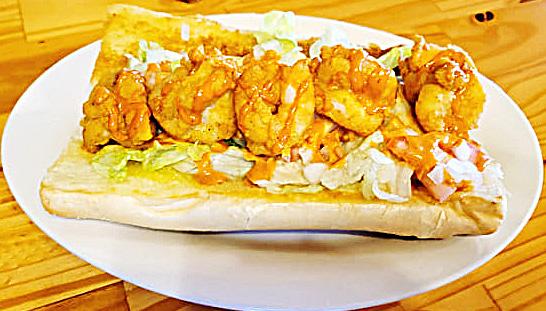



... And top it all off with dessert, like a slice of cheesecake.








PHOTOS: CODY CUTTER CCUTTER@SHAWMEDIA.COM & THE CROOKED ROOF FACEBOOK PAGE







Pork chops are also on the menu, with or without apple butter on them, and chicken sandwich choices include sweet chili chicken, buffalo bleu cheese, and — similar to the popular burger — a caramel cheddar bacon.
Whether it’s sitting at one of the tables inside, at the bar, or outside in the beer garden, talking about the food is part of the experience at The Crooked Roof.
“What I hear a lot when people come in here is that it’s enjoyable,” Luning said. “We intended to have a cozy atmosphere and have a comfortable place to go, and they enjoy being surrounded by the interior. We try to make our menu so that there’s something different for them to enjoy, and it’s just a nice place to gather with family and friends.”
Along with customers’ curiosity about their culinary concoctions, questions often come up about the roof, which actually is crooked. The building was damaged in a fire about 90 to 100 years ago, Novakovic said, and the rafters holding the roof in place were charred. Before Novakovic and Luning opened for business in April 2014, they tried to straighten the roof, but to no avail. They decided to just make sure it was structurally sound and then turn a crooked roof into The Crooked Roof after Luning came up with the idea of the name for the restaurant.
The couple had previously leased Charlie’s II in Mount Carroll for a couple of years, but when they wanted to move up to something bigger, they went looking for a place of their own and found it in Lanark. The outdoor space attracts motorcyclists for bike nights on Thursdays, and feature live music on the first and third Friday of each month — country, classic rock and blues.
“We try to get a variety of music and genres of it that everyone can enjoy,” Novakovic said. “It’s something that, whether you’re a teenager or 90 years old, you’re going to enjoy it.”

“It’s nice to see the older crowd and the younger crowd all come and mingle here and have a good time,” Novakovic said. n
Cody Cutter can be reached at 815-632-2532 or ccutter@shawmedia.com.




If you would like to learn more about these great solar incentives and more potential options available to you, contact our team of local solar professionals!

